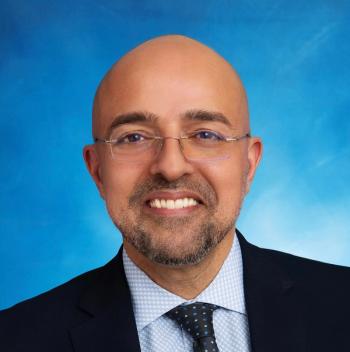
Hospitals’ community benefits extend far beyond ‘just’ medical care | Viewpoint
As lawmakers develop policies to shape our nation’s healthcare system, they should consider the vast reach hospitals have in their communities.
When asked about the role of community hospitals, I think of a story I recently heard about a woman who came into our hospital upon the suggestion of an urgent care center.
She needed five medications she could not afford. Managing multiple chronic diseases, she didn’t understand her medical options and needed help managing a better lifestyle. She was on the verge of losing her job. Her housing situation was unstable.
Without Grady Hospital, she had few, if any, options. But with our help, she left the hospital with affordable medications, a better understanding of her disease, and the ability to return to work.
Hospitals are one of the best investments a society can make. They are pillars in their community, providing medical care, steady employment opportunities, and vital social services that ensure their neighbors can thrive. From affordable housing and nutritional programs to education and training initiatives, the community benefits that hospitals provide are immense.
Physicians, nurses, and hospital staff all take great pride in keeping our communities healthy and improving the well-being of all that come through our doors. The incredible value of lives saved in the emergency room or extended by an early cancer diagnosis in the outpatient setting cannot be overstated.
But few Americans realize how far hospitals’ community benefits go beyond medical care. Now, new research shines a light on their far-reaching impact ranging from small rural towns to bustling metropolises.
For every dollar invested in non-profit hospitals and health systems,
Because hospitals are dedicated to providing high-quality care to all patients—regardless of their ability to pay—the amount of financial assistance hospitals provide is substantial,
Recognizing the unique social and economic factors that influence a person’s health, hospital services have gone above and beyond to meet the most pressing needs of communities, including housing, food security, and transportation. Specifically:
- Some hospitals have high schools on their campuses designed to train the next generation of health and science leaders.
- Others support local vegetable gardens and food pantries and work with community organizations to address nutritional needs.
- Many hospitals have programs that help people with limited mobility or restricted transportation options access health services.
- And some hospitals provide affordable housing to seniors and low-income members of the community.
All of this helps advance health equity at a time when disparities are stark.
Consider the community benefits offered at the hospital I lead, Grady Hospital in Atlanta. We provided nearly $400 million in care to uninsured patients in 2022 alone. We believe a person’s inability to afford healthcare should not prevent them from receiving life-saving care or support to live healthier lives.
To that end, at Grady, we maintain an innovative Food as Medicine program, through which doctors can write prescriptions for healthy food from our food pharmacy or teaching kitchen. Furthermore, our hospital is at the forefront of technological advances with the goal of strengthening community health and well-being. To help patients recover after a discharge and avoid readmission, our Mobile Integrated Health (MIH) program dispatches paramedics and practitioners directly to patients’ homes—before their health challenges require emergency care. We support the delivery of primary and specialty care across our large metro area.
While the community benefits that we offer are designed to meet the needs of Atlantans, our hospital counterparts across the country are tailoring innovative programs to meet the unique needs of their community members. Despite the economic, workforce, and healthcare challenges before us, we are laser-focused on health and are committed to providing even more benefits to the people we serve.
As lawmakers develop policies to shape our nation’s healthcare system, they should consider the vast reach hospitals have in their communities. By fully recognizing just how much American communities rely on their local hospitals, policy decisions can be made to not only improve healthcare but also enable our communities to thrive.
John M. Haupert is the chairman of the board of directors for the American Hospital Association.







































